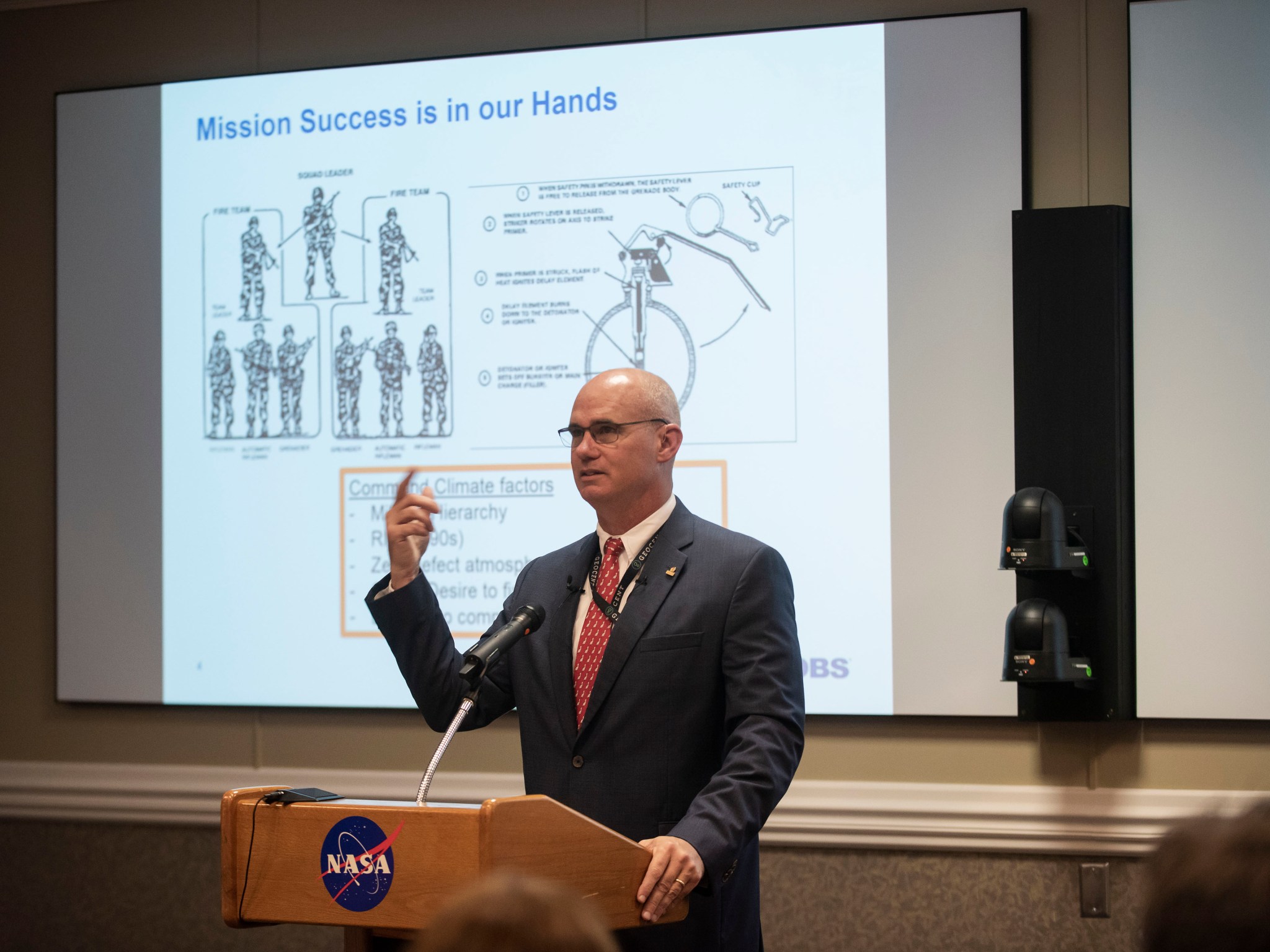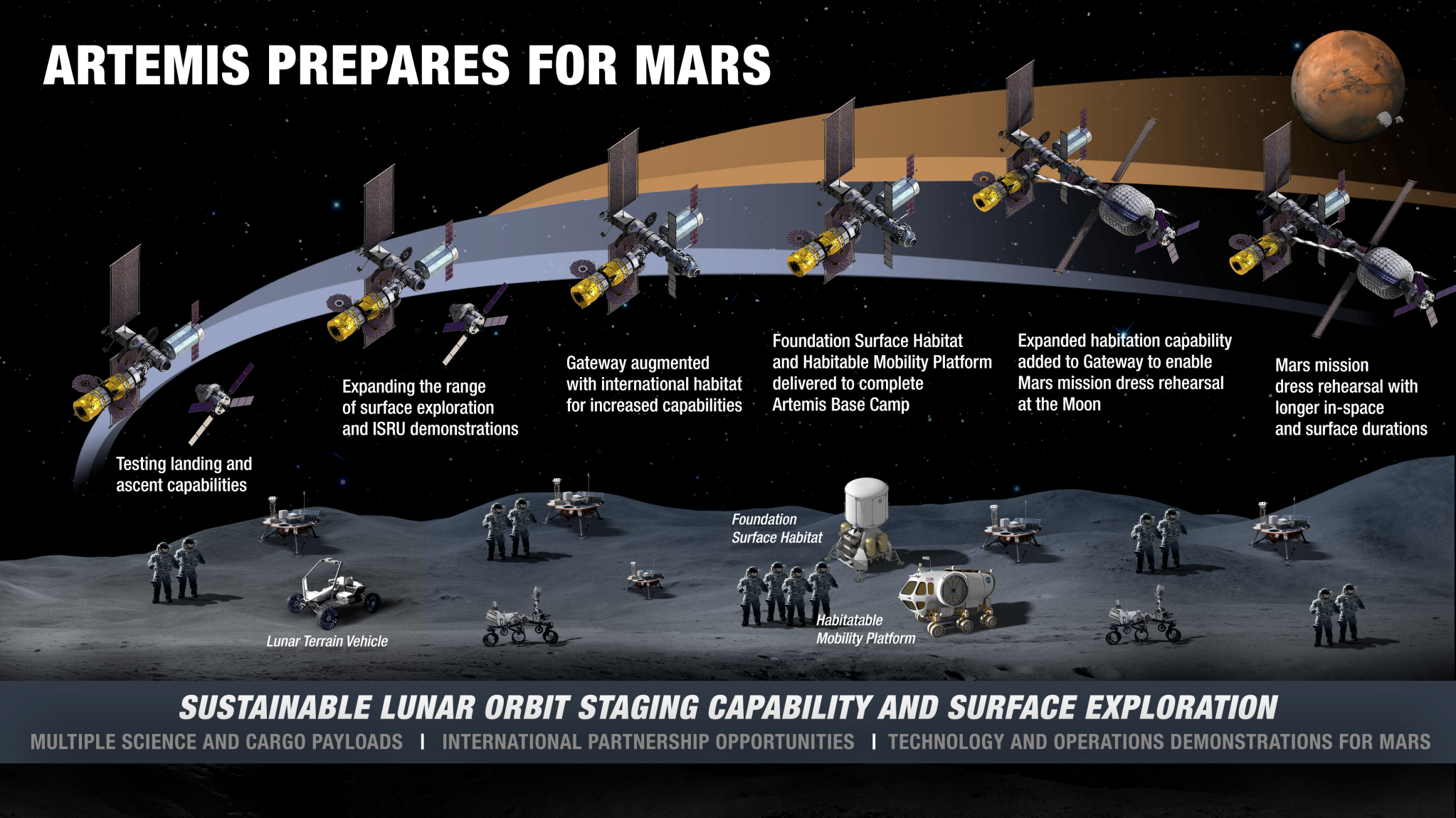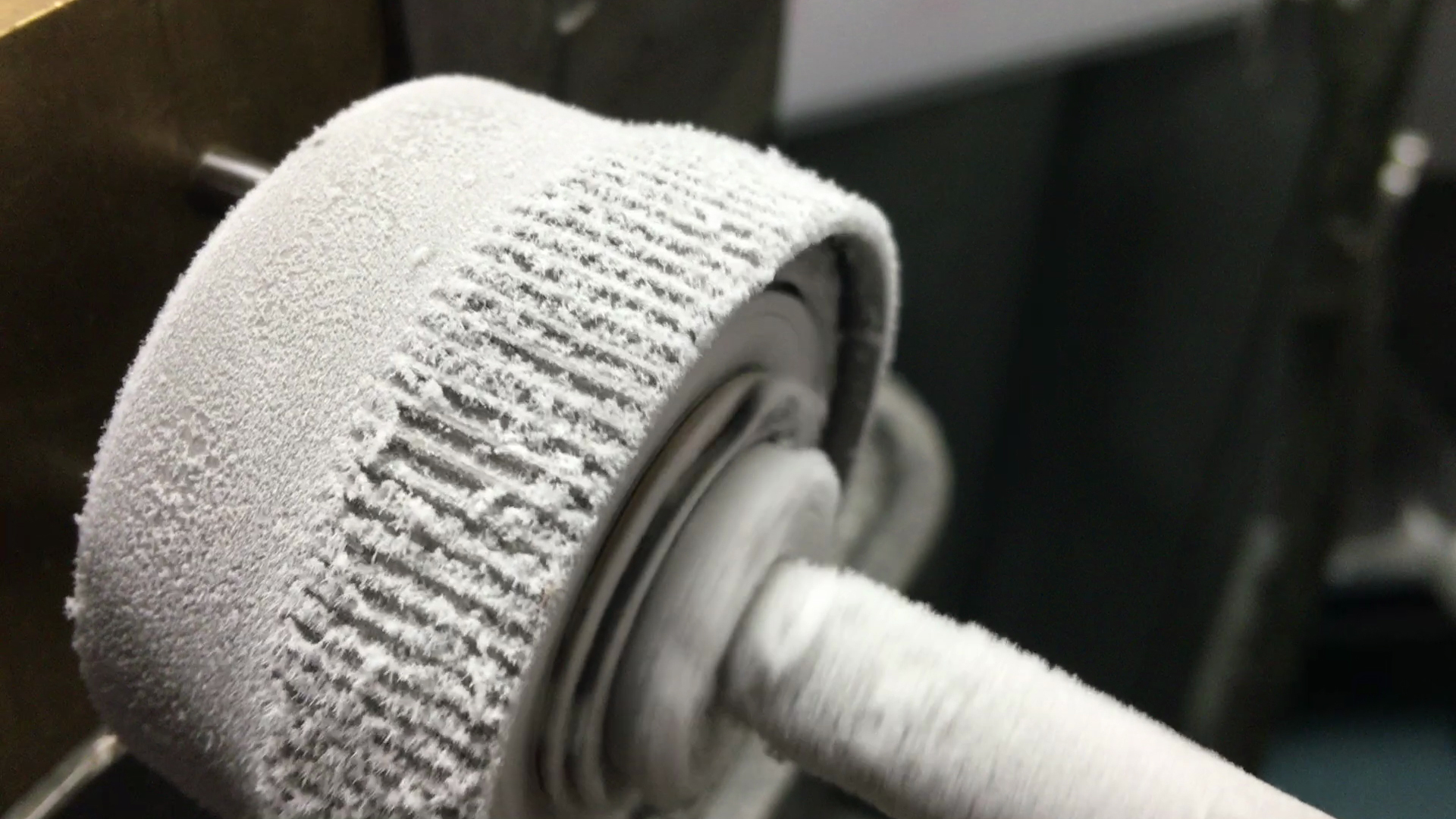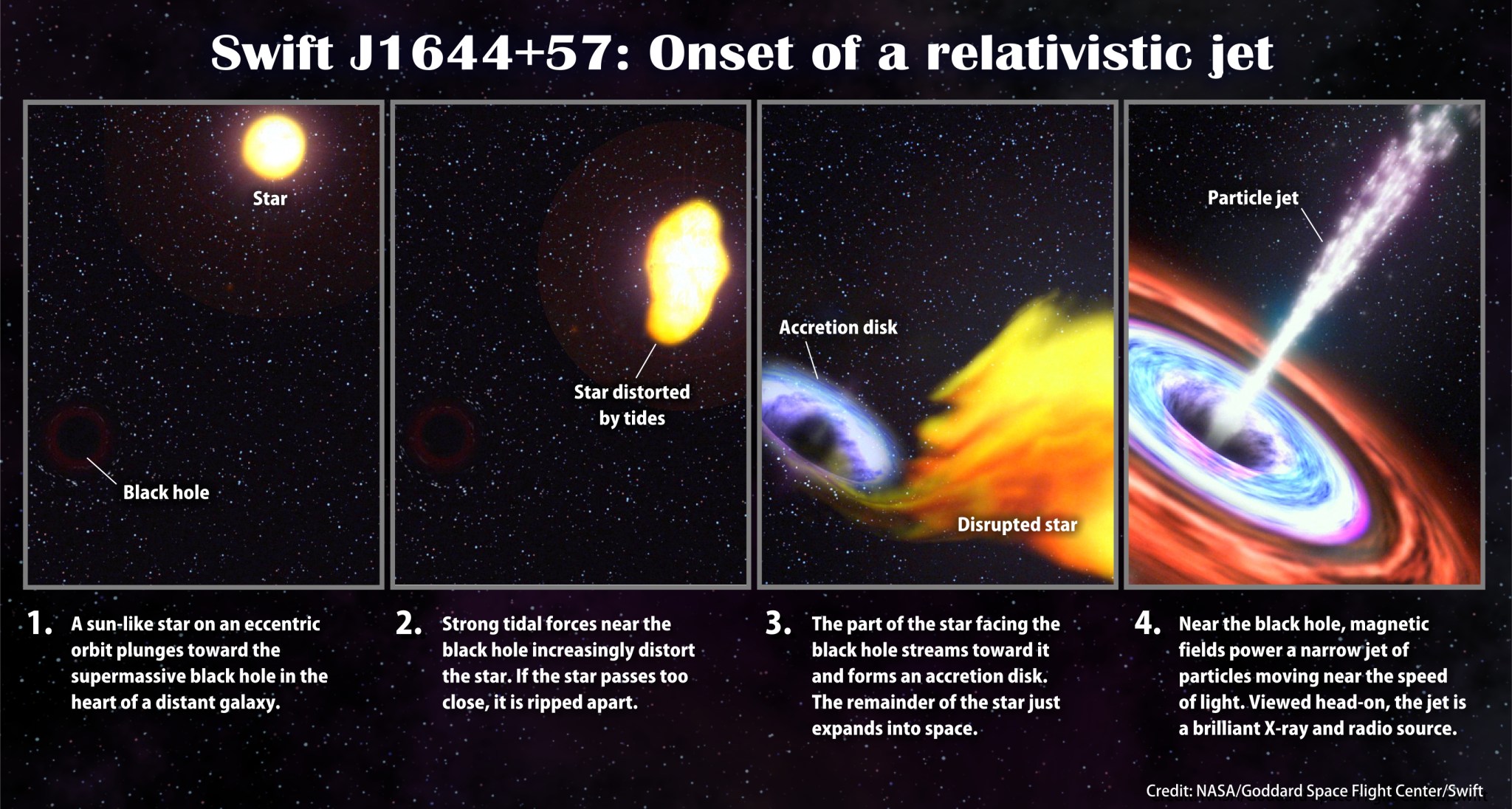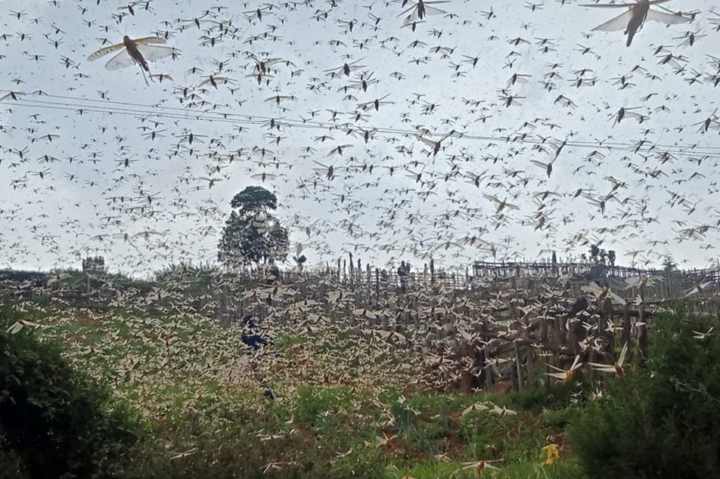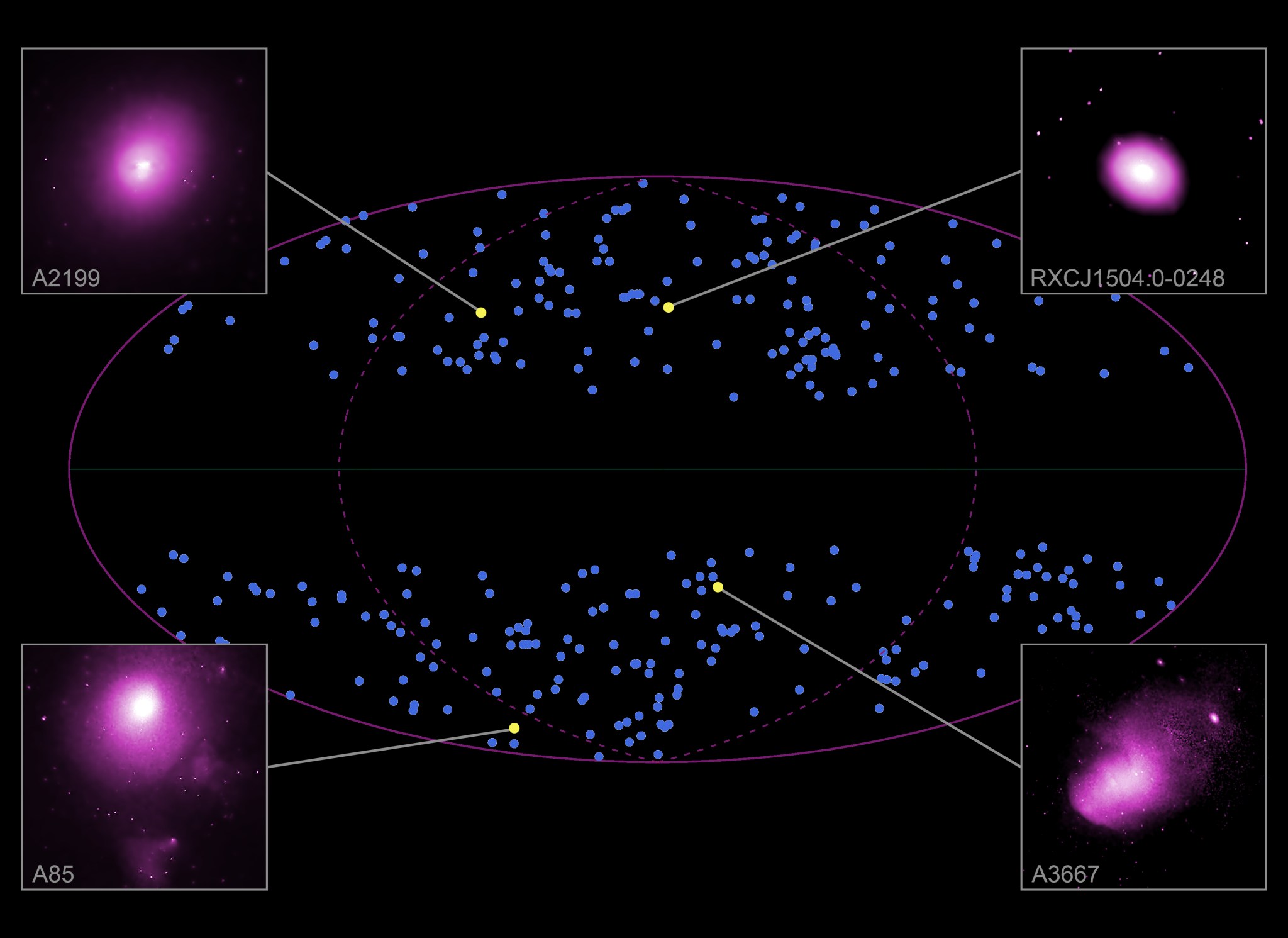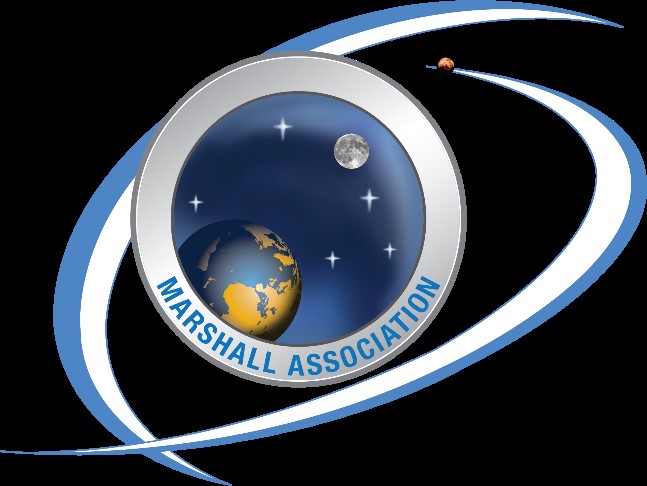In This Week’s Star
- Take 5 with Bill Marks
- NASA Outlines Lunar Surface Sustainability Concept
- The Return of American Spaceflight from American Soil
- Space Station Metallic Glass Experiment Leads to New Discovery in Liquids
- Hi-C Detects Super-Fine Strands on the Sun
- SERVIR Could Help Head Off a Massive Locust Invasion in Africa
- Carlos Barreto Certified as a Payload Ops Director
- Chandra Helps Reveal Universe’s Expansion May Not Be Uniform in Every Direction
- Robyn Crabtree, Melody Hinkle Honored as ‘HEO HErO’
- Marshall Association Opens 2020 Scholarship Applications
- This Week in NASA History: STS-100 Lands – May 1, 2001
Take 5 with Bill Marks
Bill Marks is something of a globetrotter.
“I started my Army career at Fort Benning followed by my first assignment in Hawaii, went around the world and ended up at Redstone Arsenal,” said Marks, deputy director of the Office of Center Operations at NASA’s Marshall Space Flight Center.
Following almost 28 years of military service, Marks retired as an Army Colonel and the arsenal’s garrison commander in 2016. He returned to Redstone in December 2019 to join NASA in its mission.
Marks now helps lead Center Operations — comprised of 127 engineers and specialized civil servants and 700 contractors — which provides Marshall with industrial labor relations, environmental engineering, occupational health, facility management, logistics and transportation, protective services, emergency management and subordinate site operations.
Marshall media specialist Taylor Goodwin recently met with Marks to discuss details of Center Operations and get his advice for students and young professionals interested in NASA’s mission.
Question: Can you describe the team environment in Center Operations? How are team members collaborating and supporting one another to maximize success and innovation?
Marks: This team is a well-oiled machine, and it was like that long before I joined it. People are encouraged to provide their opinion, and every opinion is acknowledged and genuinely considered. It’s an environment where people are recognized often for their contributions to mission success. There are very few obstacles to communication, and I find that to be incredibly enabling.
Question: What kind of partnerships is your team pursuing to help the agency and the nation put the first woman and next man on the Moon in 2024?
Marks: The biggest partnerships that we pursue are with our customers: those engineers and scientists that will take us to the Moon and beyond. In order to do that, we have to have other partnerships as well. We have those partnerships because our resources aren’t unlimited. We have to see what we can do with other people that have a shared interest. For example, protective services collaborates with Redstone on the Joint 911 Dispatch Center to pull resources and develop capabilities that provide a safe and secure environment for our employees to work and thrive.
Question: How does Center Operations define and achieve mission success?
Marks: We want to make sure we’re enabling mission success by providing the best possible services to meet our customers’ needs. The overall goal is to provide services that exceed our customers’ expectations. We measure that through our customers’ success. It is an unbelievable setting to walk into. In an environment like this, there really is no obstacle to success.
Question: Can you describe the most rewarding moment during your time with Center Operations?
Marks: Part of my responsibility is to chair the Facility Utilization Committee. Being able to collaborate with customers to establish the Human Landing System’s footprint was one of the most rewarding experiences that I’ve been a part of so far. Watching the Pegasus logistics team plan for and execute the shipments of the Space Launch System’s core stage from NASA’s Michoud Assembly Facility to NASA’s Stennis Space Center was also huge. In my first four months, it’s been incredibly rewarding just to be a part of those things. I can’t imagine what the future holds, but I look forward to it every day.
Question: What advice would you give to students and young professionals who want to be part of NASA’s mission?
Marks: Especially in the midst of uncertainty as we face COVID-19, I would tell them that this time will pass and we’ll be stronger as a nation because of it. We’ll have learned a lot and developed some personal techniques, tactics and procedures to move on.
Students, you need to follow your passion. NASA’s mission is extremely diverse in terms of contributing to the Artemis program. Whether your passion is logistics, protective services, science, engineering, welding, plumbing or pipe fitting — NASA needs your expertise to execute the mission. So whatever your passion is, follow it because that’s what you will excel in.
To young professionals, these are trying times that are going test your resilience — but let me assure you that you have everything you need within you to overcome this challenge and many more to come. You’re going to grow from this, and when the next obstacle comes your way, you’ll have the reassurance of just how strong you became. So have confidence in yourself, have confidence in your co-workers and have confidence in your leadership. Everybody is going through this together. We’re going to come out on the other side a lot stronger.
Previous Take 5s
Katherine Van Hooser, Marshall’s chief engineer
Bobby Watkins, manager of the Human Exploration Development & Operations Office at Marshall
Neil Rodgers, director of the Office of the Chief Information Officer at Marshall
Lisa Watson-Morgan, manager of NASA’s Human Landing System Program
Mary Beth Koelbl, deputy director of Marshall’s Engineering Directorate
NASA Outlines Lunar Surface Sustainability Concept
NASA recently proposed a plan to go from limited, short-term Apollo-era exploration of the 1960s, to a 21st century plan in a report to the National Space Council.
“After 20 years of continuously living in low-Earth orbit, we’re now ready for the next great challenge of space exploration — the development of a sustained presence on and around the Moon,” NASA Administrator Jim Bridenstine said. “For years to come, Artemis will serve as our North Star as we continue to work toward even greater exploration of the Moon, where we will demonstrate key elements needed for the first human mission to Mars.”
The core elements for a sustained presence include an emphasis on mobility to allow astronauts to explore more of the Moon and conduct more science: a lunar terrain vehicle would transport crew around the landing zone; the habitable mobility platform would enable crews to take trips across the Moon lasting up to 45 days; and a lunar foundation surface habitat would house up to four crew members on shorter surface stays.
Astronauts working on the lunar surface could test advanced robotics — as well as a wide set of new technologies identified in the Lunar Surface Innovation Initiative — focusing on technology development in areas such as living off the land and power systems. Rovers will carry a variety of instruments that will generate information on the availability and extraction of usable resources like oxygen and water. Advancing these technologies could enable the production of fuel, water and/or oxygen from local materials — enabling sustainable surface operations with decreasing supply needs from Earth.
Another key difference between Apollo and Artemis will be use of the Gateway — a command and control module — in lunar orbit. Operating autonomously when crew is not present, it also will be a platform for new science and technology demonstrations around the Moon.
Over time, NASA and its partners will enhance the Gateway’s habitation capabilities and related life support systems. Adding a large-volume deep space habitation element would allow astronauts to test capabilities around the Moon for long-duration deep space missions.
While the goal of Apollo was to land the first humans on the Moon, the Artemis program will use the Moon as a testbed for crewed exploration farther into the solar system, beginning with Mars.
NASA envisions a four-person crew traveling to the Gateway and living aboard the outpost for months to simulate the outbound trip to Mars. Later, two crew members would travel to the lunar surface and explore with the habitable mobility platform, while the remaining two astronauts stay aboard Gateway. The four crew members are later reunited aboard the lunar outpost for another multimonth stay, simulating the return trip to Earth. This mission would be the longest duration human deep space mission in history and would be the first operational test of the readiness of our deep space systems.
The report also highlights a robotic return to the surface beginning next year for scientific discovery. The Moon is a natural laboratory to study planetary processes and evolution, and a platform from which to observe the universe. NASA will send dozens of new science instruments and technology demonstrations to the Moon with its Commercial Lunar Payload Services initiative. Some of these robotic precursors –including the Volatiles Investigating Polar Exploration Rover — will study the terrain and resources at the lunar south pole.
The Space Launch System rocket, Orion spacecraft, human landing systems and modern spacesuits will round out the agency’s deep space systems. As part of the Artemis III mission, the first human expedition back on the Moon will last approximately seven days. NASA plans to send Artemis-Generation astronauts on increasingly longer missions about once per year thereafter.
With strong support in NASA, America and its partners will test new technologies and reduce exploration costs over time. Supporting infrastructure including power, radiation shielding, a landing pad, waste disposal and storage could be built up in the coming decades.
“The U.S. is still the only nation to have successfully landed humans on the Moon and spacecraft on the surface of Mars,” the report states. “As other nations increasingly move out into space, American leadership is now called for to lead the next phase of humanity’s quest to open up the future to endless discovery and growth.”
The Return of American Spaceflight from American Soil
A new era of human spaceflight is set to begin as American astronauts once again launch on an American rocket from American soil to the International Space Station as part of NASA’s Commercial Crew Program. NASA astronauts Robert Behnken and Douglas Hurley will fly on SpaceX’s Crew Dragon spacecraft, lifting off on a Falcon 9 rocket at 3:32 p.m. May 27, from Launch Complex 39A at NASA’s Kennedy Space Center, for an extended stay at the space station for the Demo-2 mission. The specific duration of the mission is to be determined. The Commercial Crew Program Launch Vehicle Office at NASA’s Marshall Space Flight Center helped certify the Falcon 9 for human spaceflight.
Space Station Metallic Glass Experiment Leads to New Discovery in Liquids
By NiCarla Friend
An International Space Station experiment has led to a new discovery in metallic glasses and liquids — a durable, scratch- and corrosion-resistant material that is often stronger than steel and can be used in a variety of items, from phone cases to electrical transformers to lubricant-free gears for Moon rovers.
Metals and glasses are seemingly very different — glasses are generally transparent and fragile, while metals are opaque and extremely strong. However, metals can form glasses under the right conditions.
Recently, NASA’s Space Life and Physical Sciences Research and Applications division in the Human Exploration and Operations Mission Directorate funded experiments on the space station to better understand how metallic glass is formed, how it could be used in space and how it could make life easier on Earth. This experiment is among the space station science operations managed by NASA’s Marshall Space Flight Center.
Ken Kelton, a physics professor at Washington University in St. Louis, and his colleagues oversaw the experiments and found that metallic glass characteristics can be determined while the metal is still molten liquid. The liquid’s thickness can indicate whether a glass will form, what kind of glass will form as well as some of its properties. This is a new development in metallic glass research and liquids in general.
“We have uncovered something that was totally unknown and has no current quantitative explanation,” Kelton said. “The work does show that there is a fundamental connection between the liquid structure and the ways in which atoms move which determines its viscosity, or thickness. This is a very important fundamental and new point about liquids.”
Kelton and his colleagues have been working to determine what metals turn into glass, the temperature at which the transformation happens, what properties the glass will have and what are practical uses for it.
Many physicists thought the answers to those questions could be found by observing what occurs at the temperature at which the metal transitions to a glass as it cools down. The Kelton team’s discovery shows this information can be determined before that. They also found that temperature does not affect electrical resistance at these temperatures.
Atoms move faster when they’re heated, so an electron stream trying to get through a heated liquid or solid has a hard time because it keeps running into rapidly moving atoms. These collisions and impediments are what cause electrical resistance. The higher the temperature, the more resistance there is.
Kelton and his team found that when some metal alloys are heated and become liquids, the electrical resistance does not change as much as the temperature increases, and the electron stream can still move through them fairly easily.
The team was surprised to learn that above certain temperatures, the electrical resistance of these metal liquids does not change at all. This gives physicists different temperature regimes in which to work and a whole new set of phenomena to explore.
“By understanding more about how metallic glasses form, we open the door a bit wider to the invention of new metallic glasses for novel applications,” said Michael SanSoucie, NASA’s Biological and Physical Science’s lead scientist at Marshall.
Friend, an ASRC Federal/Analytical Services employee, supports the Office of Strategic Analysis & Communications.
Hi-C Detects Super-Fine Strands on the Sun
New images from NASA’s High-Resolution Coronal Imager have provided the highest-resolution views ever captured of the Sun’s outer atmosphere, or corona, revealing fine strands of million-degree solar material.
The High-Resolution Coronal Imager, or Hi-C, is a sounding rocket mission led by principal investigator Amy Winebarger at NASA’s Marshall Space Flight Center. Winebarger and an international team of researchers are now making plans to launch Hi-C again, this time overlapping their observations with two Sun-observing spacecraft currently gathering further data — NASA’s Parker Solar Probe and the European Space Agency’s Solar Orbiter.
“These new Hi-C images give us a remarkable insight into the Sun’s atmosphere,” Winebarger said. “Along with ongoing missions such as Parker Solar Probe and Solar Orbiter, this fleet of space-based instruments in the near future will reveal the Sun’s dynamic outer layer in a completely new light.”
The images show loops as thin as 125 miles across in areas that appear dim and fuzzy in other Sun-watching telescopes. It’s the first direct observation of the strands that are thought to combine and make up larger loops on the Sun. The images also provide visual evidence that the staggeringly hot material that fills the Sun’s corona — which is some 300 times hotter than its surface — has definite structure on fine scales, rather than being a homogenous soup of particles.
Hi-C captured the images on its third flight from the White Sands Missile Range in New Mexico on May 29, 2018. The images were published in the Astrophysical Journal on April 7.
SERVIR Could Help Head Off a Massive Locust Invasion in Africa
East Africa is experiencing one of its worst locust outbreaks in decades. The voracious insects are devouring thousands of acres of farmland and forests, and threatening food security for millions across the region, which is already vulnerable to food shortages. The United Nations has warned that the upcoming rainy season may make things worse.
SERVIR is partnering with the U.N. and relief organizations to assess damage already done and to better understand the conditions that allow locusts to thrive. The joint program between NASA and the U.S. Agency for International Development uses satellite data to improve environmental decision-making in developing nations.
“We can use this information to help the countries predict where the locusts are going to be so they can take action ahead of time,” said Dan Irwin, SERVIR Global program manager at NASA’s Marshall Space Flight Center.
“The approach that helps prevent large-scale infestations is to catch the locusts very early in their life stages and get rid of their nesting grounds,” said Lee Ellenburg, the food security and agriculture lead for SERVIR.
SERVIR scientists are using remote sensing observations of soil moisture and vegetation to pinpoint potential nesting grounds. Soil moisture is important because females almost always lay their eggs in wet, warm, sandy soil. After eggs hatch, the abundance of nearby vegetation becomes the important parameter because it provides sustenance for maturing locusts and guides migration patterns.
Once locusts become mature adults, they are difficult to find on the ground and eradicate because they can fly 30 to 90 miles per day, especially if winds are strong. When 40 million of them gather – considered a small swarm — they can devour as much food as 35,000 people. In one day, a small swarm can jeopardize a farmer’s livelihood.
Researchers are also using ground-based observations from several local organizations and government offices to assess damage that has already been done and to validate estimates of conditions made from satellite imagery.
“Our ground partners give monthly updates on crop conditions and major events like flooding and disease outbreaks,” said Catherine Nakalembe, a food security researcher with NASA SERVIR and NASA Harvest. “They help provide critical ground information when the remote sensing data are not sufficient.”
The SERVIR program is working closely with international and regional partners as well as NASA’s Short-term Prediction Research and Transition Center, NASA Earth Science Disasters Program and several satellite missions to provide information and direction on where resources should be directed to mitigate locust outbreaks. Learn more here and here.
Carlos Barreto Certified as a Payload Ops Director
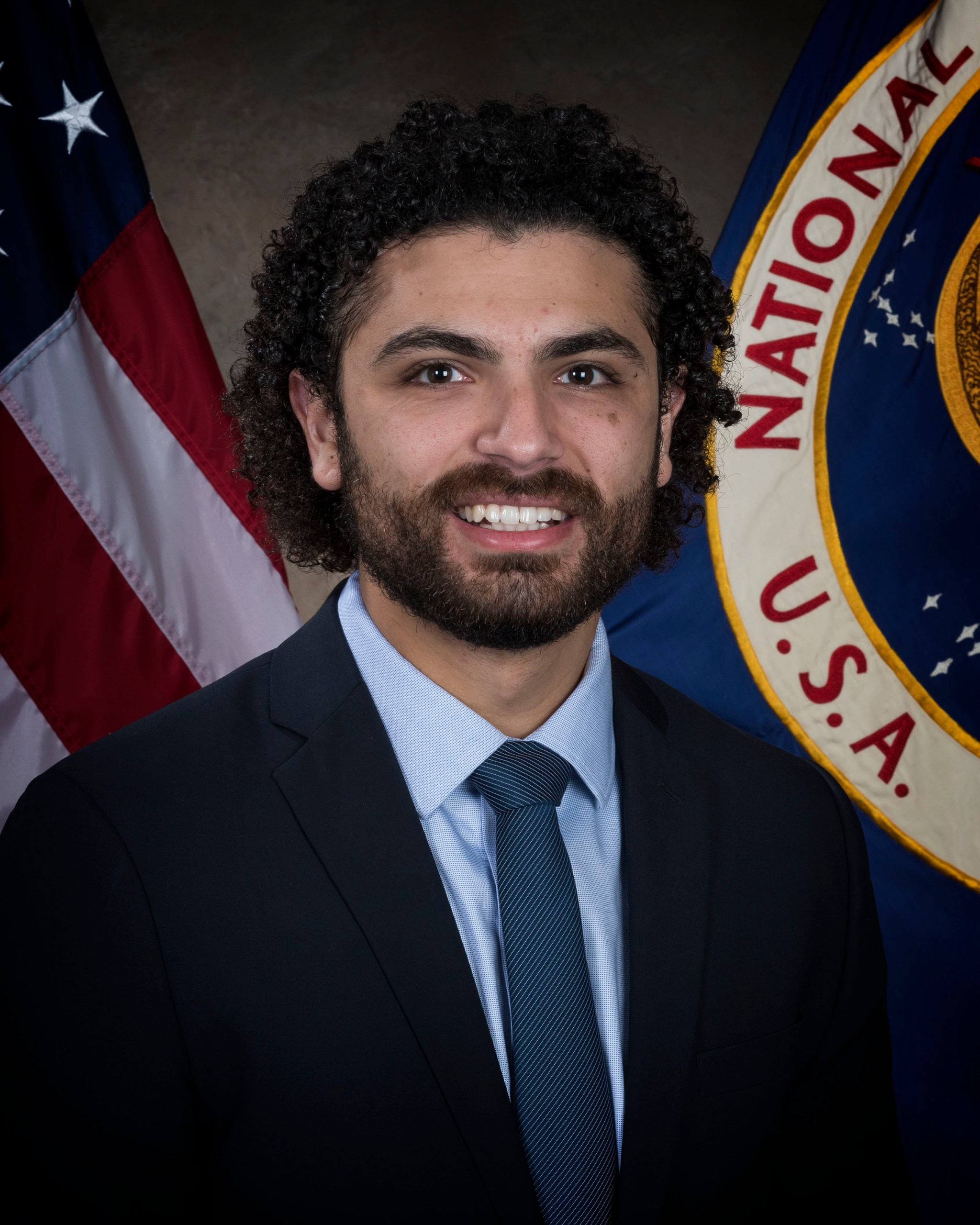
Carlos Barreto is the latest payload operation director certified by the Payload and Mission Operations Division at NASA’s Marshall Space Flight Center. Payload operations directors are real-time flight controllers for the International Space Station. They manage and direct the 24/7 operations of scientific payloads aboard the space station from the Payload Operations Integration Center at Marshall. The payload operations director is the single point of authority to the space station flight director at NASA’s Johnson Space Center for all of NASA’s payload operations. (NASA)
Chandra Helps Reveal Universe’s Expansion May Not Be Uniform in Every Direction
One of the fundamental ideas of cosmology is that everything looks the same, in all directions, when seen at large enough distances. A new study using data from NASA’s Chandra X-ray Observatory and the European Space Agency’s XMM-Newton is challenging that basic notion.
Astronomers using X-ray data from these orbiting observatories studied hundreds of galaxy clusters, the largest structures in the universe held together by gravity, and how their apparent properties differ across the sky.
“One of the pillars of cosmology — the study of the history and fate of the entire universe — is that it is isotropic, meaning the same in all directions,” said study leader Konstantinos Migkas, a researcher at the University of Bonn in Germany. “Our work shows there may be cracks in that pillar.”
Astronomers generally agree that after the Big Bang, the cosmos has continuously expanded — like a baking loaf of raisin bread. As the bread bakes and expands, the raisins — representing cosmic objects like galaxies and galaxy clusters — move away from one another. With an even mix, the expansion should be uniform in all directions, the way it would be in an isotropic universe.
But these new results may not fit that picture.
“Based on our cluster observations, we may have found differences in how fast the universe is expanding, depending on which way we looked,” said study co-author Gerrit Schellenberger of the Harvard & Smithsonian Center for Astrophysics in Cambridge, Massachusetts. “This would contradict one of the most basic underlying assumptions we use in cosmology today.”
Scientists previously conducted many tests of whether the universe is the same in all directions. Some efforts have used optical observations of exploded stars and infrared studies of galaxies. Some produced possible evidence that the universe is not isotropic, while others have not.
This latest test uses a powerful, novel and independent technique. It capitalizes on the relationship between the temperature of the hot gas pervading a galaxy cluster and the amount of X-rays it produces, or the cluster’s X-ray luminosity. The higher the temperature of the gas in a cluster, the higher its X-ray luminosity. Once the gas temperature is measured, the X-ray luminosity can be estimated. This method is independent of cosmological quantities, including the expansion speed of the universe.
Once researchers estimated the X-ray luminosities of their clusters using this technique, they calculated luminosities using a different method, which does incorporate cosmological quantities such as speed of universal expansion. The results yielded apparent expansion speeds across the whole sky — revealing that the universe appears to be moving away from us faster in some directions than others.
The team also compared their work with studies from other groups that found indications of a lack of isotropy using different techniques. They found good agreement on the direction of the lowest expansion rate.
Authors of the new study offered two possible cosmological explanations for their results. One is that large groups of galaxy clusters might be moving together for reasons other than cosmic expansion. It is possible, for example, for adjacent clusters to be pulled in the same direction by the gravity pull of other galaxy clusters.
Astronomers have seen similar effects with relatively nearby galaxies, at distances typically less than 850 million light-years. Scientists expected expansion of the universe to dominate the motion of clusters across larger distances, however — up to the 5 billion light-years probed in the new study.
A second possible explanation is that dark energy — the mysterious force that seems to drive acceleration of the expansion of the universe — is itself not uniform. In other words, the X-rays may reveal that dark energy is stronger in some parts of the universe than others, causing different expansion rates.
The team analyzed a sample of 313 galaxy clusters, including 237 clusters observed by Chandra with a total 191 days of exposure, and 76 observed by XMM-Newton with a total 35 days of exposure. A paper describing their findings appears in the April 2020 issue of the journal Astronomy and Astrophysics.
NASA’s Marshall Space Flight Center manages the Chandra program. The Smithsonian Astrophysical Observatory’s Chandra X-ray Center controls science and flight operations from Cambridge and Burlington, Massachusetts.
Robyn Crabtree, Melody Hinkle Honored as ‘HEO HErO’
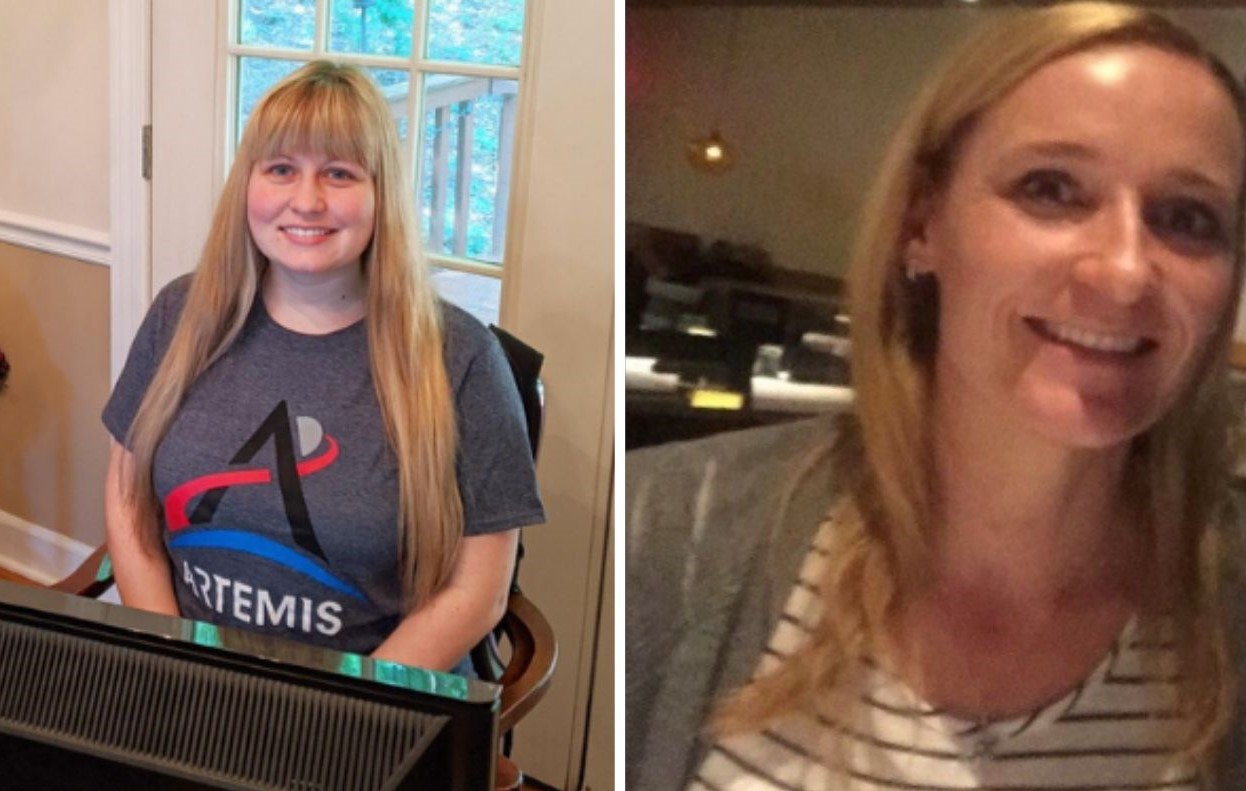
Robyn Crabtree, left, and Melody Hinkle, contract specialists with the Human Landing System Program, are the latest NASA’s Marshall Space Flight Center team members to be honored as a “HEO HErO.” Crabtree was recognized April 27, and Hinkle on April 28, in tweets by Douglas Loverro, NASA associate administrator for the Human Exploration and Operations Mission Directorate. Marshall manages the Human Landing System Program for the agency. HEO HErOes from across the agency are shared on @DouglasLoverro. (NASA)
Marshall Association Opens 2020 Scholarship Applications
The Marshall Association is accepting applications for its annual college scholarship program until 5 p.m. May 22. Scholarships are awarded to qualifying college-bound students who are children of association members and pursuing degrees in undergraduate studies in technical and non-technical fields. The group plans to award up to six scholarships this year, ranging in value from $1,200 to $1,500.
Applicants must submit an essay on this year’s theme — “Visions for Today & Tomorrow” — which challenges them to consider our current cultural upheaval and how they might lead the next generation to a better future.
“Each year, the Marshall Association is proud to reward the hard work and creativity of tomorrow’s leaders,” said Reggie Alexander, president of the organization. “Right now we are in an unprecedented global circumstance, and we want to hear their thoughts on building a sustainable, thriving and successful tomorrow.”
The application, eligibility requirements and full submission details for the scholarships can be found here.
The Marshall Association is a group of civil service and contract employees, retirees, industry representatives and community partners who work to promote networking and community involvement and to create a forum for exchanging ideas and information. The association hosts monthly luncheon speakers, who present a diverse set of topics.
Each year, the group also organizes two hallmark events: the scholarship program and “Racin’ the Station,” a September run/bike duathlon where participants aim to finish the race faster than the time it takes the International Space Station to complete a trip around Earth.
Annual membership in the Marshall Association is $30, which supports the scholarship program and other events. Interested participants can register to join the Marshall Association here. Learn more about the group and upcoming events here.
This Week in NASA History: STS-100 Lands – May 1, 2001
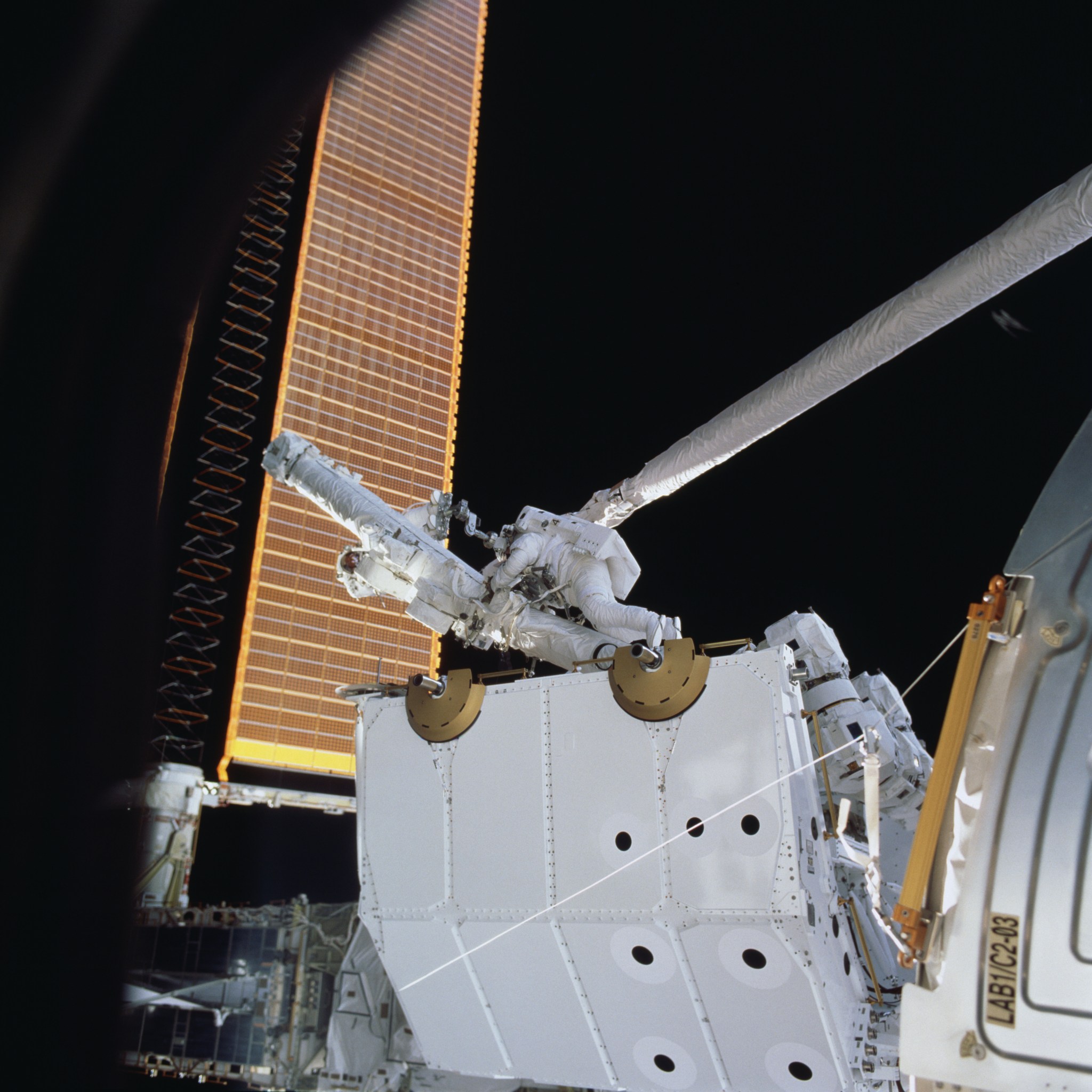
This week in 2001, space shuttle Endeavour, mission STS-100, landed after a successful 11-day mission to the International Space Station. Endeavour delivered the new Remote Manipulator System, or Canadarm2, to the station. Here, astronauts Scott Parazynski and Chris Hadfield prepare to unpack Canadarm2 during the first of two spacewalks. The NASA History Program is responsible for generating, disseminating and preserving NASA’s remarkable history and providing a comprehensive understanding of the institutional, cultural, social, political, economic, technological and scientific aspects of NASA’s activities in aeronautics and space. For more pictures like this one and to connect to NASA’s history, visit the Marshall History Program’s webpage. (NASA)























